-
Posts
1,011 -
Joined
-
Last visited
Content Type
Profiles
Forums
Gallery
Events
Posts posted by flyer
-
-
While working in the bow I noticed that I was quickly running out of usable belaying points for all that running rigging. Therefore two additional knightheads had to be installed right up in the bow.
The skipper approved this and the bosun also changed the belaying point of the fore yard lifts to one knighthead aft of the one according to the kits plans.
Now it should get a little less crowded on those knightheads.
First try with a new knighthead
Now, where did that carpenter go?
The skipper seems content and the bosun already has other urgent tasks to be done.
- Blue Ensign, billocrates, KenW and 7 others
-
 10
10
-
While browsing through James Lees book to check what blocks where needed for the sprit topsail and the staysails, I noticed that a bowsprit netting was needed to stow the furled fore topmast staysail. As I intend to attach that sail furled I searched further and read that this said netting was to be attached to some nag or other cattle and suddenly felt much sympathy (again) for Stephen Maturin.
Then I found out that the netting was to be mounted between the bowsprit horses with two stretchers. Those horses (and those of the jibboom) were missing in this kit. In fact, the only kit so far where I came across that seemingly often overlooked detail was Mamolis ‘La Gloire’.
Fortunately I found also a picture of the netting in my book and was able to make one out of the same material I use for the hammock netting. The horses for both bowsprit and jibboom were also installed.
Finished netting
...fixed in place
Horses installed
The bowsprit cap gets a bit crowded. I installed two additional ringbolts on top for the horses.
-
- Martin W, WackoWolf, Mirabell61 and 7 others
-
 10
10
-
Hi Ken
Thank you (and I knew there was a hidden catch somewhere but at least that admiralty doesn’t write monthly bulletins).
Frankly I had no problems at all with the brails because I cheated and left them off completely. They would have been covered by the furled sail anyhow and only have added to the bulk of the cloth.
Checking on your (really nice) Fair American I presume, that you did the furling according Lees page 113. There the brails in fact seem somehow to double up as gaskets which I find complicated. I thought my brails could be more according to the sketch on page 109 (bottom right) because that seems to represent an older version. With those the clew would have been pulled more upwards (as it happened on my sail) and then I used a few single gaskets on the gaff and a spiral gasket on the mast to fix the sail.
Below you find some more pictures of the spanker (others are on page 17 of the log)
Cheers
Peter
- GuntherMT, Martin W, Mirabell61 and 1 other
-
 4
4
-
-
Hi Nils
Thanks. Yes and the white wall doesn’t swallow to much light either. It was a good idea for the working place.
The sprit topsail yard will follow and also carry a furled sail (first time I will try this).
The shape of the sail was chosen only to reduce the amount of furled cloth. It should represent a normal spanker where its foot matches the length of the boom. The lashing is according to Lees sketches of spanker and driver (have you got that book yet?).
Cheers
Peter
-
Hi Nils
Great sails, great progress. If you go on like this, you will soon be up to ‘Mobbsie-speed’ (similar to speed of light: you cannot go faster without using some rather exotic physics).
Cheers
Peter
-
-
Hallo Nis
So, I presume you are a member of that club as well? Thanks for the welcome.
The profession was very nice – except maybe when you had to master all possible horrors of aviation twice a year in your simulator sessions or when you had to steer an aircraft through the thunderstorms in the bay of Bengal or while trying to stay awake and alert through countless endless nights or while trying to get some sleep in a rundown hotel somewhere in Africa or freezing your behind of in Moscow while wondering if having your aircraft heated with the exhaust gas of an old MIG engine really was the best way to get rid of all that snow and ice or while being held back somewhere by some unrest or civil war or other or – and that was the worst of all – while reading your chief pilots monthly bulletins.
But the sunrise was always beautiful.
Good question! It seems really a bit strange that there is never something like an in-hauler or similar. On my Pegasus the lashing of the jibboom prevents the sling of the spritsail yard to move further forward but I think the main back holding force of the whole arrangement came through the braces and a bit through the sheets. This however in turn would mean that the thrust from the sail was also brought to the ship through exactly those same lines. Or perhaps the friction between yard and bowsprit could also transfer a significant part of the force. Anybody got any other ideas?
Regards
Peter
- Martin W, Mirabell61 and justsayrow
-
 3
3
-
- KenW, Mirabell61 and Barbossa
-
 3
3
-
Hi Michael
Just lucky shots, I think…
Thanks anyway.
Peter
-
Hi Nils
Glad to be able to help a bit.
Actually I am really curious about how your superb build will look after you assimilated all that information …


Cheers
Peter
-
Back to serious business...
The spritsail yard (no sail) is being hanged onto the bowsprit. I try to finish the last of the rigging in a working order that enables me good access to the actual belaying points without blocking the way to future ones – and sometimes nearly am successful.
Spritsail yard being attached
-
Well, I took some time to respond to the last posts and the wharf was rather quiet as well.
The reason is that I experienced a radical change in my life: After my last flight (to Singapore) I’m now a retired skipper with a lot more time for shipbuilding. That change was celebrated with a two-week-stay on the beaches of Florida. There weren’t many ship models to see – the Mel-Fisher-Museum in Key West shows a lot of very interesting artefacts but only one, rather simple, ship model – but the sea was lovely and most of the mojitos as well – again cheers to Sir Francis Drake!

After 34 years of fortunately accident- free flying I’ll be earthbound again (but plan to remain a flyer in that forum) and will happily enjoy my freedom of any fleet chief pilots or board members (and plan to find out if there will be more time for shipbuilding or if it’s true that retired gentlemen have no time at all...).
Last flight into Singapore...
-
While I was trying to install all the rigging which is belayed somewhere on the centerline simultaneously I realized that also the spare spars and the boats must be set on their place at the same time...
Lashing the spare spars
Working on lashing the spare spars while tripping over all the loose ends. It’s high time the bosun has that deck tidied a bit...
- KenW, Mirabell61, WackoWolf and 4 others
-
 7
7
-
Hi Nils
There is a lot of information about the size of the stay sails in the mentioned James Lees’ The masting and rigging of English ships of war.
I noticed that it is still available on Amazon for 75$ in used condition. I bought my copy in the museum shop of the USS Constitution and don’t remember what I actually paid but the price printed in the book is 40£. If you could squeeze it into your budget I would highly recommend buying the book.
The size of your sails accomplished with the help of your tummy however looks right to me although I didn’t check all the measurements.
While strolling through the wharf I managed to take some pictures of the jibstay…
lower end of the jibstay on the traveller
'upper' end of the jibstay hitched around the lower deadeye of the starboard topmast backstay
Take care
Peter
- KenW, Martin W and Mirabell61
-
 3
3
-
Hi Mike
Thank you for the compliments and I’m really looking forward to a build with the quality of yours showing sails!
Take care
Peter
-
Hallo Nils
Yes, according to James Lees, it seems the jib was, after its introduction around 1705, either set flying or after about 1719 on the jibstay. The stays lower end was being seized to a thimble on the traveler while its upper end rove through a block stropped to the topmast cap on the starboard side. It was then led down to the stool abaft the fore channels where on small ships it was hitched around a deadeye. Its size was about 0.5 of the fore topmast stay.
What you say about shifting the traveler to change the position of the center of the force on that sail to balance the ship is excellent – I never thought about that possibility. You think like a structural engineer. On the ‘upper’ end of the jibstay (which is hitched around that deadeye) you could have some excess length to adjust to the shifting of the traveler. On larger ships, by the way, that end of the jibstay was secured by means of a fall which made adjustments even easyer.
Very interesting questions!
Take care
Peter
- Mirabell61 and Martin W
-
 2
2
-
Hi Mobbsie
Thank you (and all of you) for the appreciation of my sail work. That really helps through the tedious part of sailmaking.
Take care
Peter
-
Hi Nils
Are you oversaturated with compliments yet? No? OK, truly great work and your details are getting neater and neater!
I found your question about bracing the yards quite intriguing. The missing space to brace the yards did in fact disturb me a bit but I just put it down to mistakes in my builds and ignored the fact that the kits must represent the true conditions considering their quality.
Browsing through John Harland’s Seamanship in the age of sails I find that for example the sequence of orders to wear a ship included:
Let go lee truss-tackle fall! and
Weather truss tackle fall!
In seems your assumption is correct and the yard was allowed to move away from the mast. This however looks strange to me as it then would rest against the foremost shroud on the lee side, putting some strain onto and chafing it. But perhaps the whole rigging was much more dynamic and put to stress and wear as I can imagine when meticulously setting up one rigid rope or line after the other.
Very good question! Perhaps some other member knows more and where are the administrators anyway?

Cheers
Peter
- Mirabell61, Martin W and mtaylor
-
 3
3
-
The sail was attached to the yard and that to the mast similar to the main topgallant sail. No special problems there.
Only that I found somewhere halfway through this work that I did overlook the bowlines which the plans show attached to the bare yard but of course should have been bent to the sails before furling them. Well, you live and learn (and use bad language).
It is another fine detail of the kit to include them in the plans and I will find a way to include them in my build.
I’m now finishing all the lines and ropes which are belayed along the centre line (centerline for those who don’t have the happiness to count themselves as one of Her Majesties subjects) and continue then outwards and forward finishing the rigging.
-
Hi Martin



Hi Ken
Thank you for the compliments – using me as a reference is a big one.
The visit I paid to your Fair American was well worth it. That’s a lovely vessel and a fine build. I found that ‘Amati cloth’ you used for sails very interesting. It seems thin and light which is perfect. But on the other hand the texture of the fabric is still too visible for that scale. That means the search for the perfect cloth continues.
But anyhow – ‘…almost presentable sail…’ might be a tiny little bit of slight underestimation of your own work.
Hi Pucko
Thank you for the visit and the compliments.
Sorry for the long time it took to answer but I was abroad again.
No, just to about every second shroud to avoid the problem you mention.
Cheers
Peter
-
Hi Martin
Unfortunately only the running rigging for that sail is done. On the other hand there are only 3 more yards remaining to finish and of those, the spritsail yard, will carry no sail – only the upper sprit topsail will be there in furled condition.
And then only two jibs will remain and the finishing of the deck equipment with spare spars and boats and the gun port lids, the lantern, the hammock nets, all the braces on the lower yards and a few odds and ends – yes, I’m nearly there. But seriously, I can begin to think about the next build as it should start in less than a year.

Hi Ian
Thank you for the compliment. I’m glad, if I can be of any help.
Hi Nils
Sure. But of course there are still mistakes and shortcuts in my rigging. If in doubt, feel free to ask.
Cheers
Peter
- Mirabell61 and Martin W
-
 2
2
-
Hi Nils
Your Pegasus is really taking off!
Regarding slings: I would hold the two largest yards – main and fore yard – with slings. I did the same on my Pegasus after consulting my external brain (Lees).
I trust the rigging, let alone the sail making, will take some weeks...
Weeks?
You must be running in some kick down-over boost-afterburner-mode! Mere mortals as me need months if not years.
Take care, excessive speeds may be dangerous

Peter
- captainbob and Mirabell61
-
 2
2



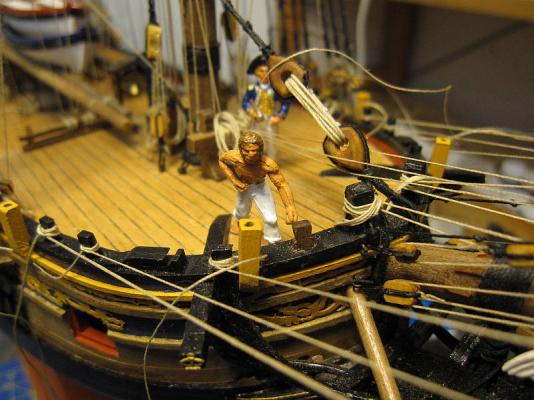
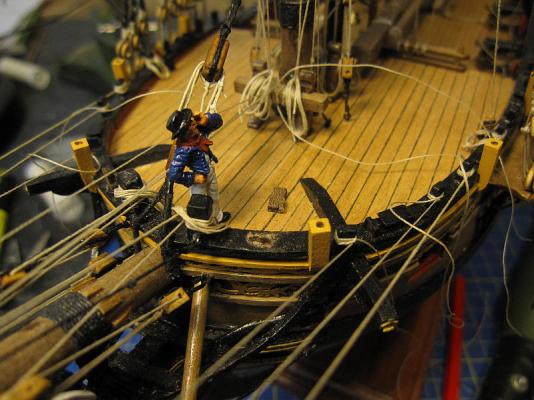
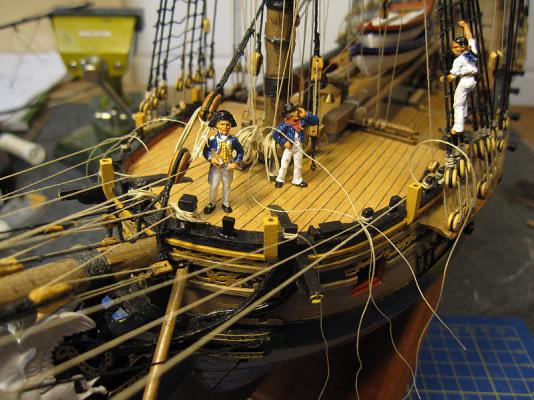
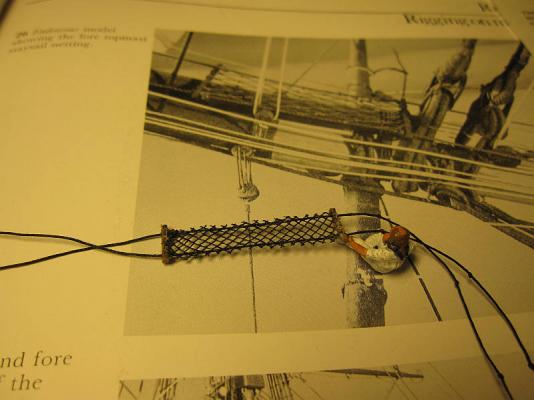
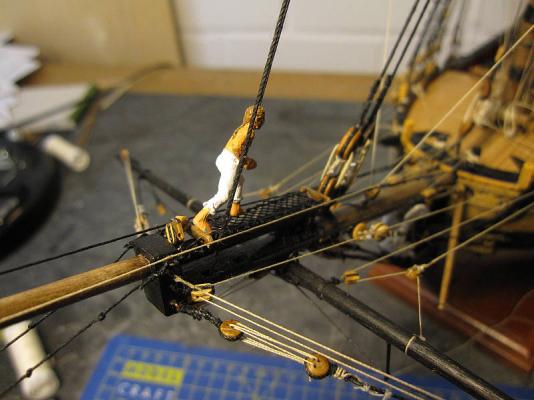
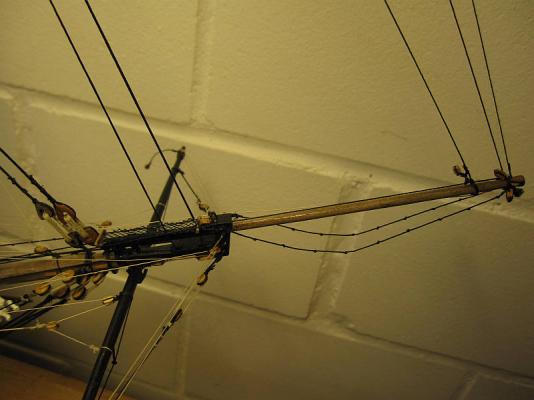
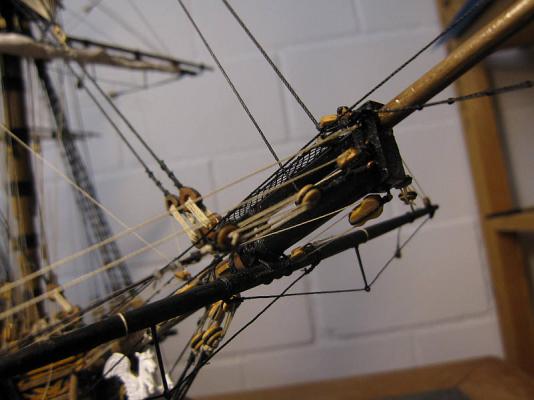
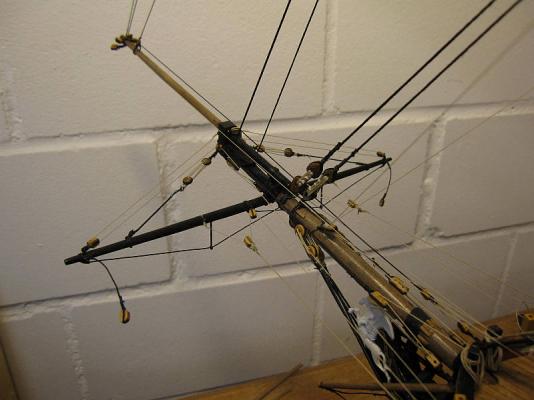
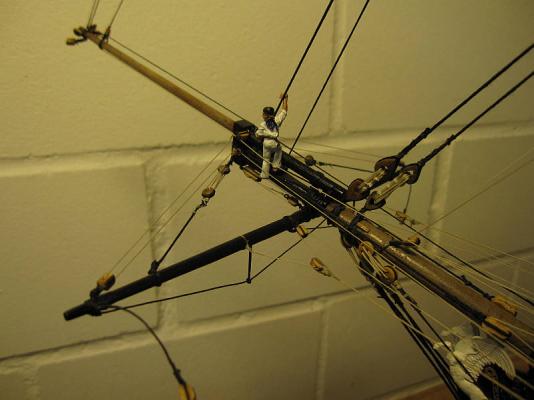
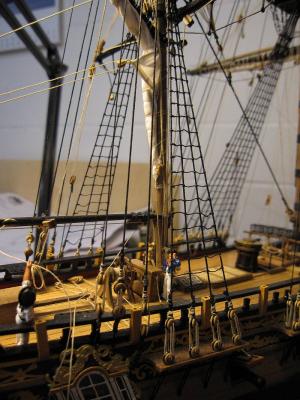
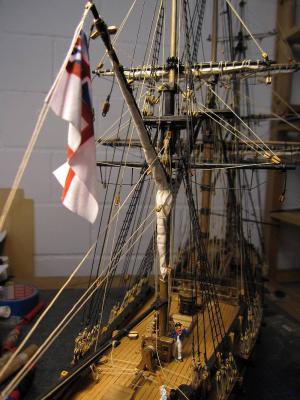
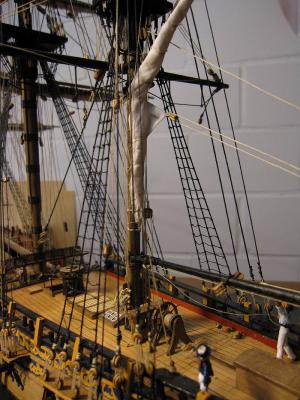
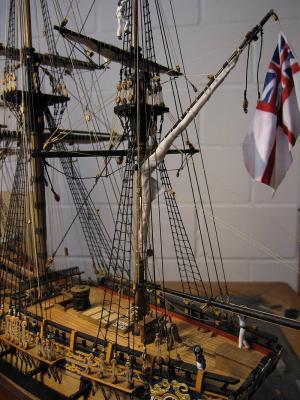
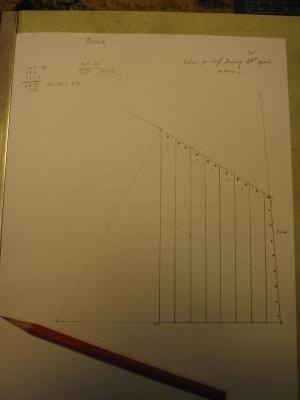
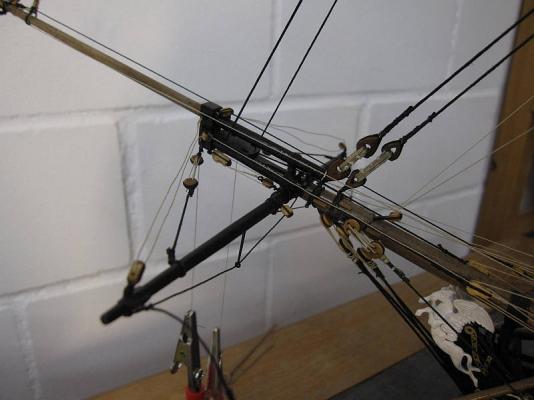
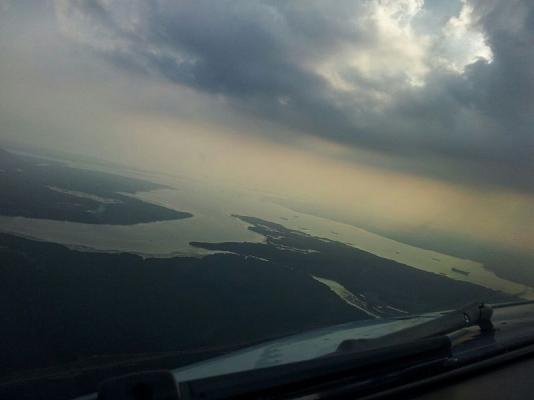
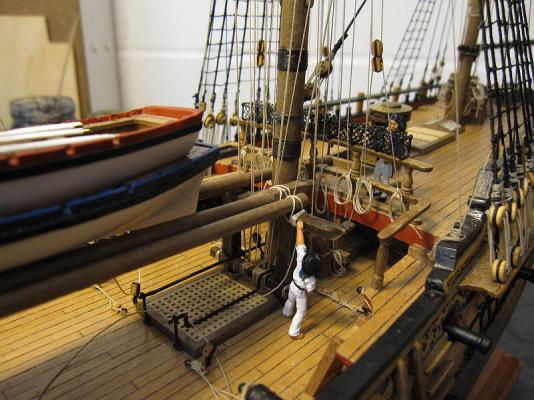
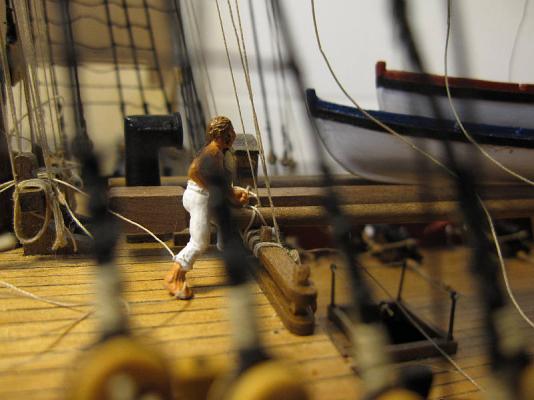
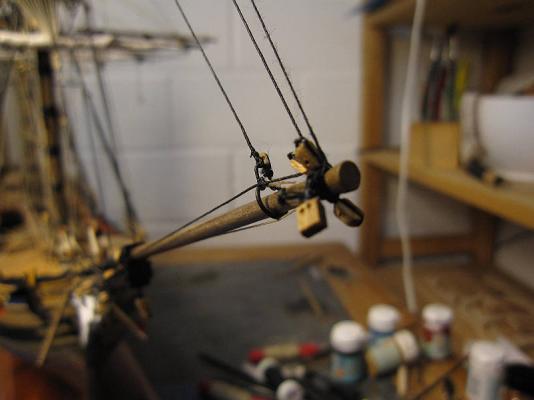
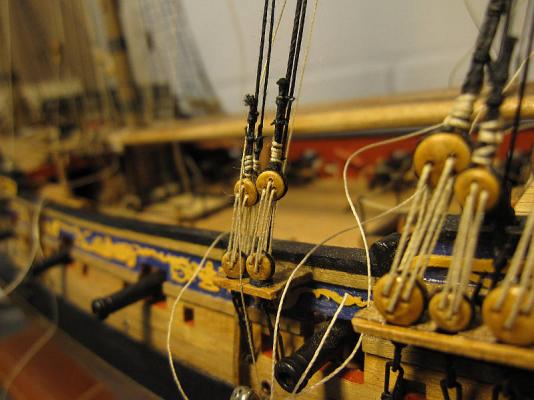
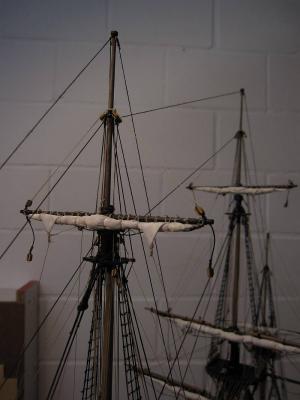
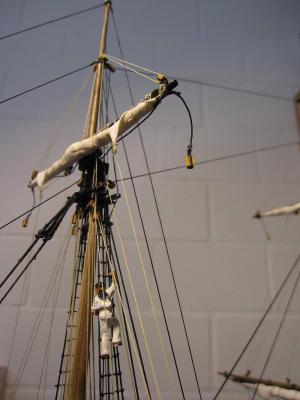
HMS Pegasus by flyer - FINISHED - Victory Models
in - Kit build logs for subjects built from 1751 - 1800
Posted
Hi Mobbsie
I must admit, that I really stumbled Maturin-like across that horse on the bowsprit when I first read about it. What does a horse do on a bowsprit? Whine and fall into the sea, most probably, panicky beasts they are. (I like them.)
Then I wondered why horses on the yards are always done in all details but those on the bowsprit hardly ever. No answer for that question.
Unfortunately most of the netting will probably be covered by the furled sail but we’ll see.
Hi Nils
No, it’s between the stays and quite easy to fit in.
Good luck with all that laundry you plan to hang into your rigging. Usually I follow W. zu Mondfelds advice and start aft and low moving upwards and forward and inboard to outboard also when installing yards and sails. But I never put up more staysails than spanker and jib so far.
I think it’s most important to find a working order where you don’t block yourself your access to further working areas and belaying points.
Cheers
Peter